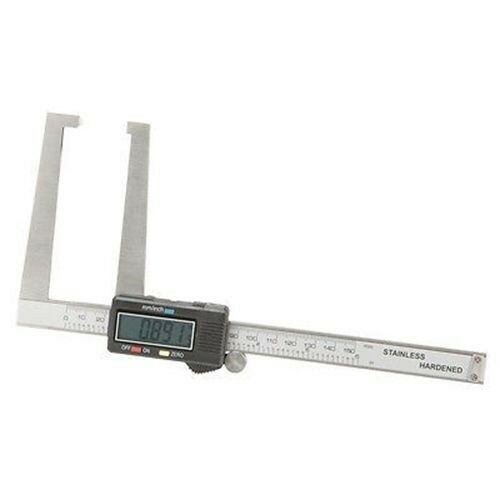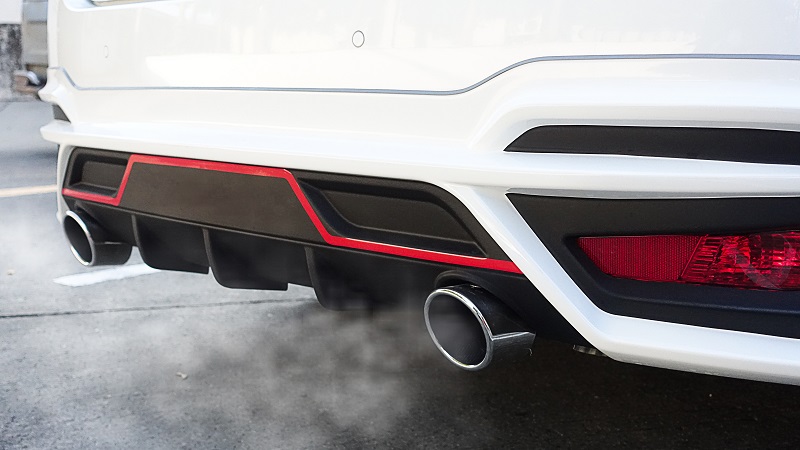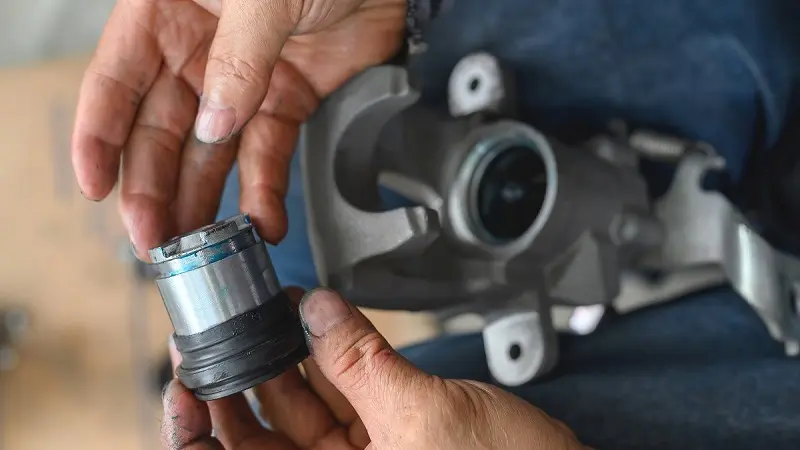So you’re cruising along on a sunny day and all of a sudden that little yellow engine light pops up on your instrument cluster. You didn’t notice anything funny going on, so you go home and pull out your code reader, and you’re greeted with a trouble code: P0130 Heated Oxygen Sensor Bank 1, Sensor 1 Circuit Malfunction.
You have your DMM ready, and you’re prepared to dive in and test the circuit. But, there are four oxygen sensors on this vehicle. Which sensor is it? Lucky for us, there are a few standards in the industry that can help us avoid diagnostic vertigo.
It is important to note that when ordering a part that is labeled left or right, there are standards across the industry as well. The left and right sides of the vehicle are always defined as being viewed while sitting in the driver’s seat. The left and right of the engine are always going to be viewed while standing at the rear of the engine and looking towards the front.
Get high-quality replacement oxygen sensors for your car!
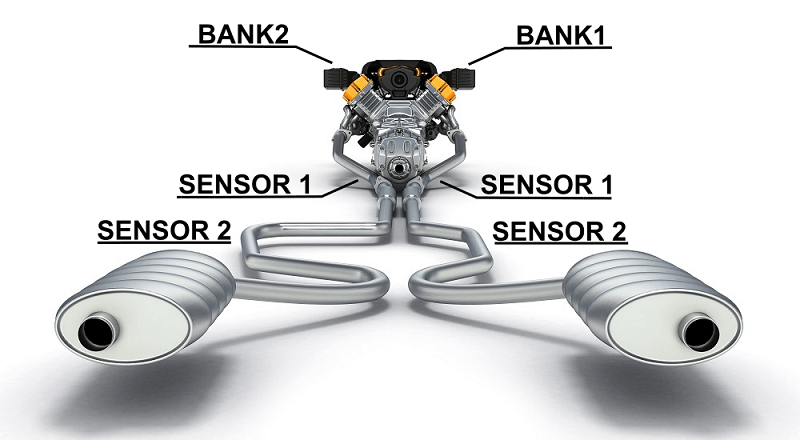
Bank 1, Bank 2
In the automotive world, Bank 1 refers to the number one cylinder bank, which means it is the bank where the number one cylinder is located. On an inline four-cylinder engine, this is the only cylinder bank. On an inline six-cylinder engine, you may see two banks being represented in the scan tool data when in theory there is still only one actual cylinder bank.
A good example of this is the BMW M54 engine, where two separate exhaust manifolds are used in a single-cylinder bank layout. On the M54, the front three cylinders contain the number one cylinder, so this is referred to as bank 1.
Likewise, the rear three cylinders are referred to as Bank 2. On engines with opposed cylinder banks, such as a V8 engine, the rule is the same, being that bank one is always the bank containing the number one cylinder. You will need to consult the service manual to find out the cylinder layout for each particular engine.
Sensor 1, Sensor 2
As far as oxygen sensor location goes, things are quite simple:
Sensor 1 is the upstream oxygen sensor. It is the sensor that measures the oxygen content in the exhaust, providing an input to the computer, which determines how to adjust the air/fuel ratio. Sensor 1 is the sensor closest to the engine.
Sensor 2 is the downstream oxygen sensor. It is always going to be located after the catalytic converter. Its job is to monitor the oxygen content exiting the catalytic converter in order to determine if it is operating efficiently. In some cases, there will be a Sensor 3. Sensor 3 is found on some Ultra Low Emissions Vehicles (ULEV) and will be located after the post-catalytic converter.
Component locations can be misleading at times. Knowing where to look can help save both time and money when performing repairs on your vehicle, especially if you’re looking to replace a faulty oxygen sensor without throwing the kitchen sink at your car.
Now that we know what sensor 1, sensor 2, and bank 1, bank 2 means, let’s discuss oxygen sensors for a bit.
Oxygen Sensors – The Basics

Most vehicles will inform you of a malfunctioning oxygen sensor with an illuminated check engine light on your dashboard. It’s also quite common for the light to come on before you begin noticing any other symptoms related to an oxygen sensor, which can almost make it feel surprising at first.
Luckily, most modern vehicles will also let you know exactly what’s wrong using a corresponding error code. Plug in an OBD II reader and the system will generate a specific trouble code. Multiple trouble codes suggest a problem with one or more oxygen sensors. P0135, P0130, and PO162 are just a few examples.
The way forward is usually testing the oxygen sensors with the help of a multimeter. However, there are multiple sensors, and getting to and testing each can be quite annoying and time-consuming. Fortunately, the codes triggered by the sensor failure will also tell you where to look, i.e. bank 1, sensor 1, as we’ve explained above.
What Are the Symptoms of a Bad O2 Sensor Bank 1?
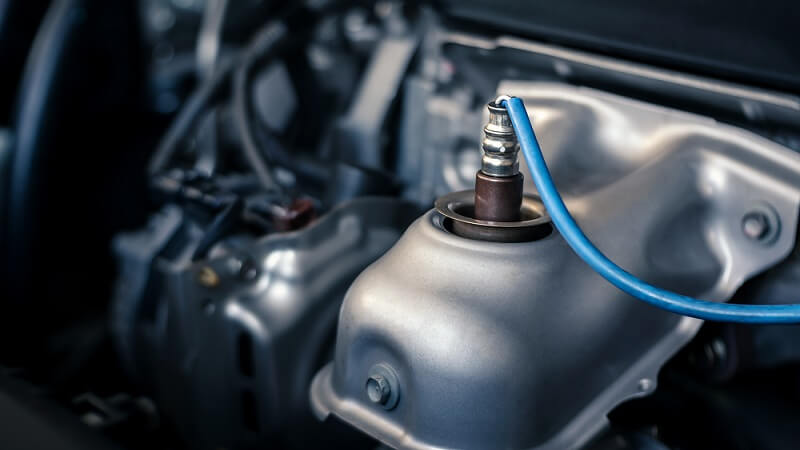
A bad oxygen sensor is either caused by either the sensor itself failing, a circuit that can’t pass sufficient voltage, or a wiring-related issue. Here are some of the symptoms of a bad O2 sensor in bank 1.
Rough Idle
One of the most common symptoms of a bad oxygen sensor is a rough idle. There’s also the possibility of it failing to idle where it frequently stalls. The symptoms would are similar to the symptoms of a faulty MAF sensor. Overall, a bad O2 sensor can cause vehicles to run less efficiently.
Incorrect Air-Fuel Mixture
As we mentioned at the beginning, one of the main purposes of an oxygen sensor is to help maintain an optimum air-fuel mixture. And if the oxygen sensor has gone bad it will fail to do so. In many cases an O2 sensor failure can cause the engine to run rich as the ECU pumps more gas into the intake, some of which is pushed out the exhaust unburnt.
Misfiring Engine
Another symptom that could occur as a standalone issue or in addition to the ones mentioned above is an engine misfire. If your engine is misfiring especially when your foot is steady on the gas there is a high chance it could be a bad oxygen sensor.
Starting Trouble
A vehicle with a bad oxygen sensor in the bank 1 location would also have trouble starting up. This occurs because of the lack of oxygen in the ignition cycle that’s caused by a faulty oxygen sensor.
Poor Fuel Economy
When a vehicle has a bad air-fuel mixture, the computer tends to push more fuel than necessary into the system, causing the engine to run lean. We’ve already mentioned some effects of this symptom, increased fuel consumption is another one.
We Have What You Need!
Once you determine the oxygen sensor you need, you can input your vehicle’s details into our car selection tool and find Genuine or OEM sensor. Determine the sensor’s location (i.e. bank 1 sensor 1 location), check whether it’s faulty, and get yourself a brand new one at the best price right here!


